History of Wooden Boat Building in WA
Allan introduced Elly Spillekom. who was our special presenter for the evening.
Elly, originally from the Netherlands, has always been interested in the history of the Dutch connection with Western Australia, and started her talk by detailing the very first sighting of Australia in 1606 by Willem Janszoon aboard the Duyfken
Once the VOC started sailing the southern route to reach Batavia, many of their ships sighted WA, which included more than a few shipwrecks.
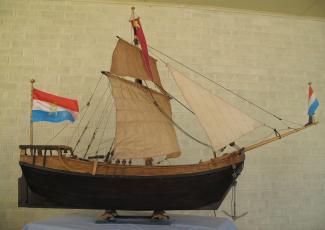
These include the Batavia and the Zeewijck and as one of the captain’s kept a logbook, this is the first record of a boat being built in WA.
Moving on to the founding of the Swan River Colony and the repairs to HMS Success, it was soon apparent that transport up the river from Fremantle to Perth was one of the governor’s first priorities, which led to many boat builders springing up on each bank of the river.
With an amazing selection of historic photographs, Elly brought alive both the vessels they built, and what a hard life it must have been.
There is no doubt that many of these boat builders were exceptional craftsmen in wood, and I believe this is where much of our heritage comes from.
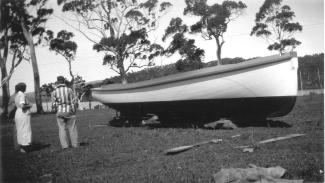
It was amazing to hear that they built schooners and pearling luggers on the river, and then had to get them across the rock bar before they could be rigged and launched at sea.
Elly spoke about the replicas built in Fremantle, both the Endeavour and of her involvement with the Duyfken 1606 Foundation, and whilst both vessels are now at the National Maritime Museum in Sydney, they are at least being preserved for all to see.
The Duyfken has just returned from a voyage to Tasmania visiting the Wooden Boat Show in Hobart.
I then showed a few pictures of some of the wooden boats that I had been involved with at some stage, and with the Duyfken still on the screen, suggested that the FWWA needed lift its game!
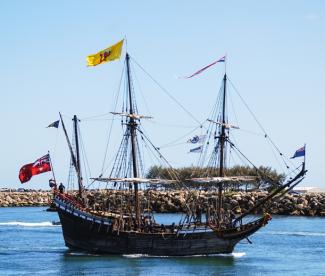
I have seen enough boxes and turned bowls of late and maybe it is time we look for something a bit bigger!
With the theme being wooden boats, I took the opportunity to bring one of my kayaks to the meeting which I had built in 2002, these are now 20 years old and in that time they have travelled to every corner of Australia.
Based on an original design by “Chesapeake Light Craft” called the Mill Creek 13 they are a very stable craft and have been converted to replicate a sea kayak.
They are exceptionally strong and built out of marine ply using the “stitch and glue” method of construction with “West system” epoxy glues.
I still use the epoxy fillet system in building some of my small boxes and trays, which is useful, especially when you are trying to join timber veneers as thin as 1.5mm - 2mm thick.
Whatever joint you use in this thickness, it does not have a great deal of strength, but so long as you are adding some sort of finish on the inside, such as felt or micro suede, you can easily hide the epoxy fillet that is there to strengthening the mitre joint.
I handed around a few examples to show the type of construction I was talking about.
Both CLC and West System web sites are a mine of information on different joints and boats made from strips timber or inlays and finishes you can use.
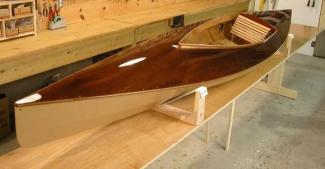
All of this is just as relevant to whatever timber project you are building, so go on line and see what information is available.
https://www.westsystem.com.au/
Paul Birchall then explained how he had modified his vacuum exhaust system with a double slide blast plate, to avoid having to unplug the flexible exhaust tubing from each machine when he wanted to change over from one to another.
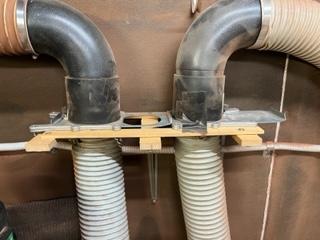
It would certainly make life easier as I am sure we all have a similar problem when changing machines.
